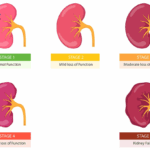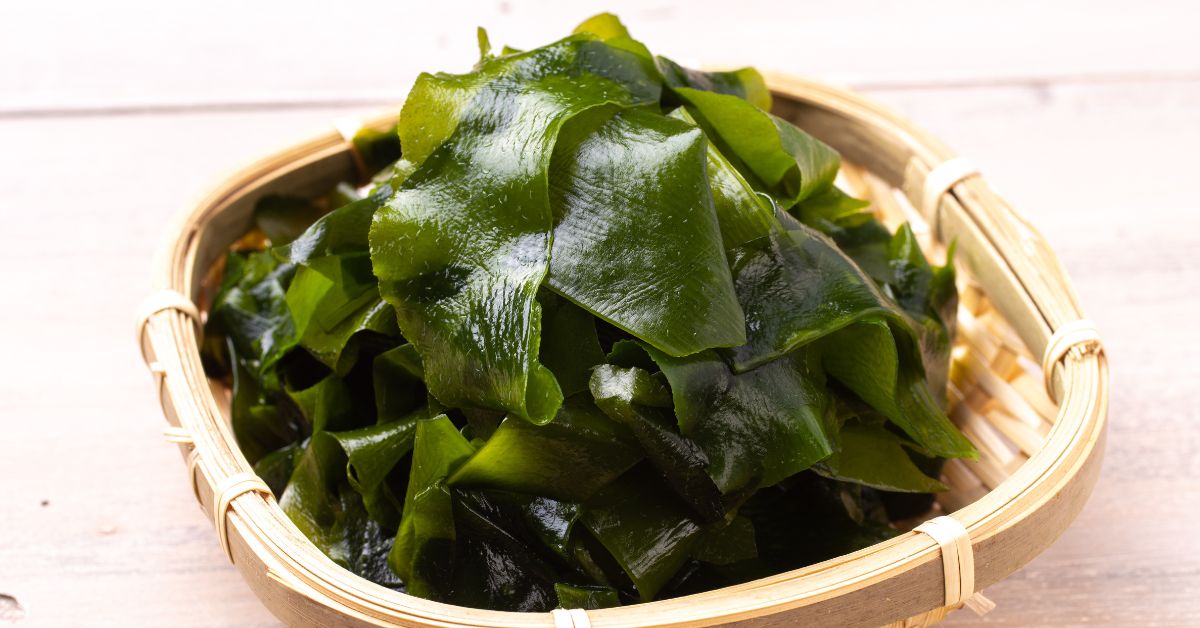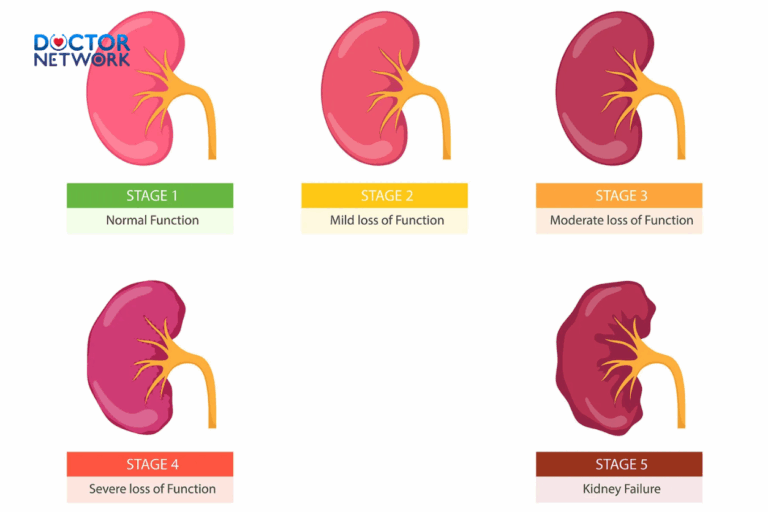Discover the surprising calorie content of balut, the controversial Southeast Asian delicacy. This comprehensive guide explores the nutritional value of balut eggs, comparing their calorie count to other protein sources. Learn how balut fits into various diets, its potential health benefits, and what to consider before adding this unique food to your meal plan. Whether you’re a culinary adventurer or health-conscious eater, this article provides essential information about balut calories and its place in a balanced diet.
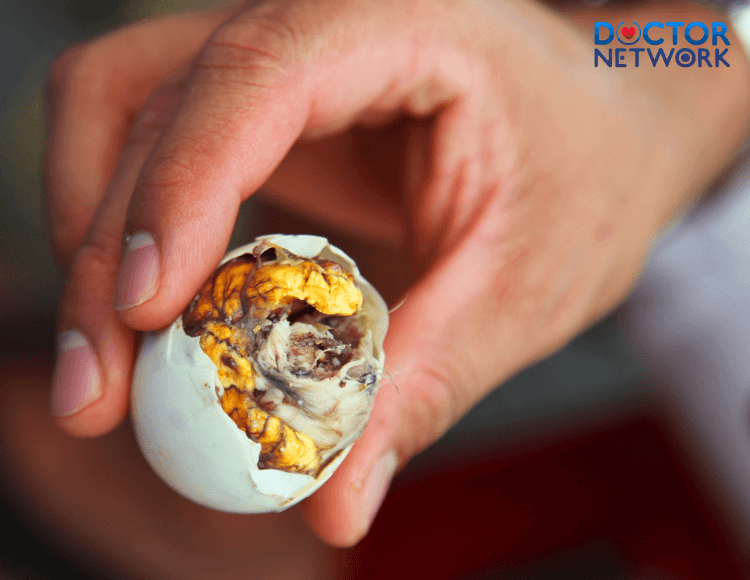
Balut is a high-quality source of protein
Nutritional breakdown of balut
Balut delivers a substantial nutritional punch, proving to be more than just a snack or street food. A single serving typically one egg provides approximately 188 calories, an impressive figure given its size. But beyond calories, balut offers a unique macronutrient profile that deserves attention.
In terms of nutritional comparison, balut is reminiscent of other nutrient-dense foods. Think of it as a miniature powerhouse, akin to a compact, fully-loaded battery that can keep you energized throughout the day. Each 100-gram serving typically contains:
- Calories: 188
- Protein: 13-14 grams
- Fat: 10-14 grams
- Carbohydrates: 1-1.5 grams
This density is particularly appealing for those looking to integrate more protein-rich foods into their diet, especially in regions where protein sources may be limited.
Table comparison of macronutrient composition:
| Nutrient | Balut (per egg, ~70g) | Chicken Egg (50g) | Duck Egg (70g) |
|---|---|---|---|
| Calories | 188 | 72-80 | 185 |
| Protein (grams) | 13-14 | 6.5-7 | 13 |
| Fat (grams) | 10-14 | 5-6 | 14 |
| Carbohydrates (grams) | 1-1.5 | 1 | 1 |
Balut is thus a rich source of protein relative to its size, making it an appealing option for many diets. Its balance of nutrients illustrates how cultures utilize local ingredients to create foods that are not only flavorful but also nutritionally sound. By embracing balut, you not only partake in a unique gastronomic experience but also harness the benefits of a whole food that has nourished communities for centuries.
Comparison through metaphor
Consider balut as a treasure chest of nutrients each bite unlocks different vitamins and minerals that contribute to your health. Just as a treasure hunter sifts through sand for gold, consumers will find each egg packed with rich resources that support various bodily functions and aid in overall health.
Calories per serving
Understanding the caloric content of balut is essential for those monitoring their dietary intake. On average, a balut egg weighs approximately 70 grams and contains about 188 calories. This caloric density is significant enough that balut can be utilized as an energy-boosting snack as well as a flavorful main dish .
But where do those calories come from? Let’s break it down further. The macronutrient composition of balut reveals that its energy primarily comes from fat and protein, delivering a well-rounded snack that keeps hunger at bay.
Caloric distribution showcases that:
- Fat: Roughly 10-14 grams (approximately 90 calories), which accounts for a significant portion of the total caloric intake. This includes about 3-4 grams of saturated fat.
- Protein: Approximately 13-14 grams (around 52-56 calories), giving a notable boost to your daily protein intake. This is vital for muscle repair and growth.
- Carbohydrates: A mere 1-1.5 grams (4-6 calories), making balut a low-carb option while simultaneously being rich in protein and fats.
It’s these distinctive elements the richness in fat and protein along with minimal carbohydrates that sets balut apart from more conventional protein sources like chicken breasts or beans. Instead of just filling up on empty calories with snacks that might be laden with sugar and refined carbs, opting for balut can provide substantial benefits in terms of nutrition and energy levels throughout your day.
Key Points
- Caloric content: Approximately 188 calories per egg.
- Energy source: Primarily from fat (90 calories) and protein (52-56 calories).
- Minimum carbs: Balut is low in carbohydrates, making it an appealing choice for those on low-carb diets.
In a world where calorie knowledge is essential for many, understanding the caloric value of balut allows individuals to make informed decisions about incorporating it into their diets while also enjoying its unique flavor and heritage.
Macronutrient composition
Balut is not just about calories; it’s also about what makes up those calories. The detailed breakdown of macronutrients reveals it to be an excellent source of protein, fats, and minimal carbohydrates. The approximate composition per balut egg (around 70g) can be summarized as follows:
- Protein: 13-14 grams
- Fat: 10-14 grams
- Carbohydrates: 1-1.5 grams
This composition is strikingly similar to that of high-quality foods valued for their health benefits. For instance, consider the protein content of balut compared to lean meats. Balut provides 13 grams of protein per egg, roughly equivalent to that found in a small chicken breast but with more crowded calories due to the fat content.
Metaphorically speaking
Imagine balut as a nutritional Swiss Army knife: compact yet versatile. It combines protein and fat in a single food item, thus eliminating the need for multiple dishes to achieve a balanced meal. With just one egg, you can access a variety of nutrients similar to using multiple tools for different tasks. The richness of balut not only satiates by reconciling hunger but also nourishes on multiple levels.
Nutritional Benefits of Macronutrients
- High Protein: Supports muscle synthesis and repair, particularly advantageous for athletes or those engaged in regular physical activity.
- Healthy Fats: The fats found in balut, particularly if sourced from free-range ducks, could supply essential fatty acids, contributing to heart health.
- Low Carbs: Ideal for low-carb diets, balut allows individuals to enjoy a satisfying meal without excessive carbohydrate intake.
These factors culminate in making balut not just a delectable food, but a significant nutritional player that can complement various dietary needs while respecting different culinary traditions.
Vitamins and minerals in balut
Beyond macronutrients, balut boasts a treasure of vitamins and minerals that contribute to its overall health benefits. Not only is it an energy-dense food, but it also contains vital nutrients that play roles in numerous bodily functions.
Key Vitamins and Minerals in Balut:
- Vitamin A: Supports vision, immune function, and cellular communication.
- Vitamin B12: Crucial for red blood cell formation and neurological function.
- Iron: Approximately 3 mg per egg; aids in oxygen transport in the blood and supports muscle function.
- Calcium: Essential for bone health, contributing to the structural integrity of bones and teeth.
- Folate: Beneficial for pregnant women, supporting fetal development.
To further illustrate the importance of these nutrients, let’s put them through a comparison lens. Consider the roles of calcium and iron in our diets; they’re like the foundation and armor for our daily activities. Calcium fortifies our bones much like a solid foundation supports a house, while iron fuels our body’s energy levels, ensuring we can go about our day without fatigue.
Benefits of Key Vitamins and Minerals:
- Supports Heart Health: Vitamin B12 and iron contribute to cardiovascular health by aiding in red blood cell production.
- Enhances Muscle Function: Iron supports oxygen transfer, essential for athletic performance.
- Bolsters Immune System: Vitamin A plays a crucial role in maintaining a healthy immune response.
Table of Vitamins and Minerals per Balut
| Nutrient | Amount per Egg | % Daily Value |
|---|---|---|
| Vitamin A | 264 IU | 5% |
| Vitamin B12 | 0.42 mcg | 7% |
| Iron | 3 mg | 17% |
| Calcium | 40 mg | 4% |
| Folate | 16 mcg | 4% |
The nutritional profile of balut reveals that it is not merely a high-calorie snack but also a source of essential nutrients that bolster one’s health across multiple spectrums, fostering a deeper appreciation for this traditional food.
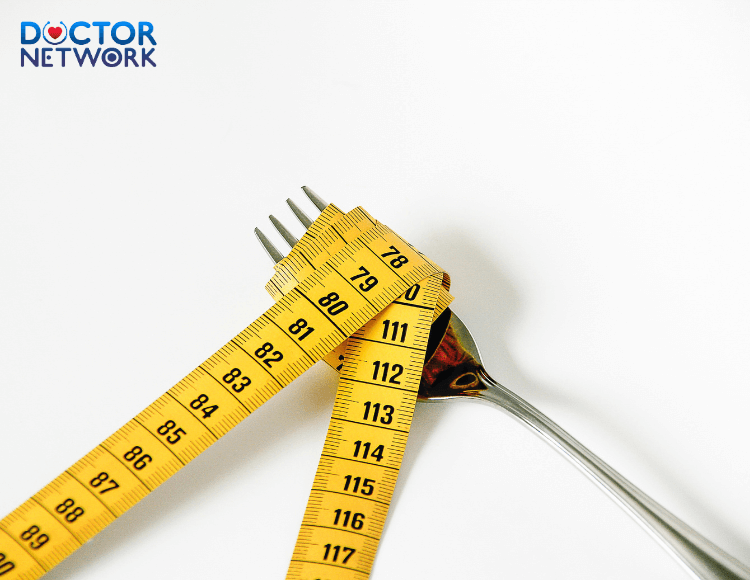
The rich protein in balut helps maintain muscles during weight loss
Health benefits of eating balut
The myriad of nutrients found within balut translates into several health benefits, making it a portion of food worthy of discussion. Eating balut can yield specific advantages that cater to various health aspects, enriching diets with quality food.
- Protein Source: With 13-14 grams of protein per egg, balut can significantly contribute to muscle repair and growth. This is especially crucial for individuals who engage in physical activity or those looking to maintain muscle mass while losing weight.
- Rich in Nutrients: Beneficial vitamins such as B12 and minerals like iron and calcium can be vital in various bodily functions. For example, iron plays an essential role in red blood cell formation, thus combatting fatigue and promoting energy levels.
- A Fulfillment For Cravings: The combination of fats and protein in balut makes it a satisfying snack that curbs hunger effectively. This aspect can help avoid unnecessary calorie consumption from more unhealthy snacks.
In emphasizing these health benefits, it’s also essential to note that while balut has an extensive nutrient profile, moderation is advised, especially regarding its cholesterol content, which averages 619 mg per egg over twice the recommended daily limit.
Emotionally Engaging Statements
Balut can be likened to an embrace from a loved one; it provides warmth, comfort, and reassurance, offering sustenance not only in terms of nutrition but cultural and emotional connection as well. By partaking in this traditional dish, one doesn’t just enjoy a food item they partake in a collective experience that binds communities and creates shared tastes and memories.
Protein content
Balut’s protein content is one of its most striking features. Providing approximately 13-14 grams of protein per egg, balut is an excellent option for those seeking to enhance their protein intake. This makes it a potential dietary staple for athletes, bodybuilders, or anyone looking to maintain lean muscle mass.
Protein Overview
Why Protein Matters
- Muscle Repair: Post-exercise, the body requires protein to repair damaged muscle fibers and supports growth.
- Satiety: Protein has a satiating effect, helping control hunger and support weight loss or maintenance efforts.
- Metabolism Boost: The thermic effect of food (TEF) indicates that protein requires more energy to digest compared to fats and carbohydrates, giving a slight boost to metabolism.
Comparing with Other Sources
When pitted against common protein sources, balut holds its own remarkably. For instance, it provides more protein than a chicken egg (which contains roughly 6 grams) and is on par with some lean meats in protein density, making it an efficient food choice.
Bullet Points of Protein Value
- Balut: ~13-14 grams of protein per egg.
- Chicken Egg: ~6 grams of protein.
- Lean Beef: ~22 grams per 100 grams cut.
- Legumes (lentils): ~9 grams of protein per 100 grams cooked.
Because balut provides such remarkable protein density, it serves as an exceptional post-workout snack, allowing individuals to refuel their bodies with necessary nourishment without the burden of excessive calories.
Essential fatty acids
The essential fatty acids (EFAs) present in balut further enhance its nutritional profile. While the specifics of EFA content in balut haven’t been exhaustively documented, some healthy fats are naturally found in duck eggs, which contribute to overall well-being.
Overview of Essential Fatty Acids
- Omega-3 Fatty Acids: These are crucial for heart health, reducing inflammation, and promoting brain function. While specific amounts in balut may vary based on the duck’s diet, it’s generally considered a good source of omega-3s.
- Omega-6 Fatty Acids: Necessary for overall health and well-being, these fats play a structural role in cell membranes.
Benefits of Essential Fatty Acids
- Heart Health: Omega-3s can lower triglyceride levels, reduce the risk of heart disease, and improve overall cardiovascular function.
- Cognitive Function: A diet rich in omega-3 fatty acids has been linked to improved neurological function and reduced risk of dementia.
Comparison With Other Foods Containing EFAs
When comparing balut with common sources of essential fatty acids:
| Food Item | Approx. Omega-3 (g) per serving |
|---|---|
| Balut | Varies (unknown exact) |
| Salmon | 2.5 |
| Chia Seeds | 5.1 |
| Flaxseeds | 6.4 |
While balut may not be the richest source of essential fatty acids when pitted against items like salmon, it’s a noteworthy contributor to a balanced diet, especially when complemented by other food sources.
Emotional Connection
Imagine taking a bite of balut and feeling the warm broth embrace you from within, like a nourishing hug. The rich combination of protein and healthy fats provides not only sustenance but a genuine connection to culinary heritage that transcends simply eating.
Nutrient density
Balut is often hailed for its nutrient density, meaning it packs a lot of nutrition into a small serving. This quality makes it a valuable addition to any meal or snack. With up to 188 calories, but loaded with protein, vitamins, and minerals, it efficiently meets a range of dietary needs.
Importance of Nutrient Density
Nutrient-dense foods provide more vitamins and minerals relative to their calorie count, making them superior choices over low-nutrient foods that contribute to empty calories, such as processed snacks and sugary drinks.
Comparing Nutrient Density
Foods rich in nutrients often support better health outcomes. For instance, balut serves as an excellent alternative to more refined snacks high in sugar and processed fats:
| Food Item | Calories | Protein | Important Nutrients |
|---|---|---|---|
| Balut | 188 | 13-14g | Vitamin A, Iron, Calcium, Folate |
| Potato Chips | 152 | 2g | Minimal vital nutrients |
| Candy Bar | 240 | 1g | Minimal vital nutrients |
Choosing balut over options like chips or candy bars not only allows for satisfying cravings but also provides a more balanced intake of essential nutrients that can foster overall well-being.
Metaphorical Perspective
Consider balut as a power-packed superfood, offering nutritional value far beyond what its caloric count might suggest. Each bite is a leap into a rich tapestry of heritage and health that bolsters not just your body but your connection to cultural traditions.
Comparisons with other foods
When considering balut’s nutritional value and culinary implications, it’s essential to compare it to other common foods. This comparison can help elucidate balut’s unique position in diets across different cultures.
- Balut vs. Chicken Eggs: Chicken eggs are a staple globally, but when pitted against balut, the latter shines in protein content, providing more significant nutrition per egg in calories while being similarly low in carbohydrates.
- Balut vs. Duck Eggs: Balut, compared to regular duck eggs, offers a similar caloric range but with the added complexity of developing embryos, which may appeal to culinary adventurers seeking something richer in flavor and experience.
- Balut vs. Other Street Foods: Compared to numerous street foods, balut offers a more promising nutrient profile. For instance, consider fried street snacks known for high-calorie counts and low nutrients. Balut maintains a prominent position as a nutrient-dense option.
Overall Food Comparison Summary:
| Food Item | Calories (approx.) | Protein (g) | Main Nutrients |
|---|---|---|---|
| Balut | 188 | 13-14 | Vit. A, Iron, Folate |
| Chicken Egg | 70-80 | 6-7 | Vit. D, B vitamins |
| Fried Spring Rolls | 300 | 5-6 | Mostly empty calories |
| Meat Skewers | 250+ | 20-25 | Proteins, Fats |
In essence, while the world of food offers a vast array of choices, balut stands out as a nutrient-dense option that satiates hunger and provides valuable nutrients. The decision to partake in balut is not just culinary; it can also resonate with one’s identity, connecting individuals to their roots and heritage.
Culinary Significance of Each Choice
Choosing balut over less nutrient-rich foods bridges culinary tradition with health benefits, emphasizing the significance of food that nourishes the body while enriching cultural appreciation.
Balut vs. chicken eggs
When comparing balut to chicken eggs, the contrast becomes apparent, especially in terms of nutrition and cultural significance. Chicken eggs are often viewed as a staple in many households worldwide. They are widely consumed for breakfast, baked goods, or culinary bases, but when juxtaposed with balut, the nuances in nutritional content emerge clearly.
Nutritional Breakdown
- Calories: A standard chicken egg (about 50 grams) delivers 72-80 calories. In contrast, balut, being larger and more nutrient-dense, provides approximately 188 calories per egg.
- Protein: Chicken eggs yield about 6-7 grams, while balut boasts 13-14 grams, nearly double the protein content, enhancing its appeal as a rich protein source.
- Fat Content: Chicken eggs contain around 5-6 grams of fat, while balut may have closer to 10-14 grams, predominantly from healthy fat sources.
| Nutrient | Balut (70g) | Chicken Egg (50g) |
|---|---|---|
| Calories | 188 | 72-80 |
| Protein (grams) | 13-14 | 6-7 |
| Fat (grams) | 10-14 | 5-6 |
| Carbohydrates | 1-1.5 | 1 |
Broader Implications
While chicken eggs may offer a more neutral flavor profile, ideal for a wider variety of culinary applications, balut captures a cultural essence that takes it far beyond the conventional. The act of consuming balut can symbolize a rite of passage and provides a robust connection to Filipino heritage.
Conclusion
In a comparative frame, balut is more calorically dense and nutrient-rich than chicken eggs. For individuals looking to diversify their protein sources or explore cultural foods that provide substantial benefits, balut is a fitting choice.
Balut vs. duck eggs
Comparing balut to duck eggs, particularly unhatched ones, creates discerning contrasts in both nutrition and culinary application. While both are delicious, preparing and consuming balut adds a layer of cultural significance and culinary exploration.
Nutritional Context
Duck eggs, typically yielded by ducks, are often consumed boiled, scrambled, or used in various culinary applications, providing a rich nutrient profile. They contain approximately 185 calories per egg but, much like balut, they are also high in protein.
| Nutrient | Balut (70g) | Duck Egg (70g) |
|---|---|---|
| Calories | 188 | 185 |
| Protein (grams) | 13-14 | 13 |
| Fat (grams) | 10-14 | 14 |
| Carbohydrates | 1-1.5 | 1 |
Cultural Dimension
The difference lies in the consumption experience. Duck eggs are commonly consumed as whole eggs without the developing embryo, while balut encompasses both protein and a unique exploration of flavors that many find gratifying.
Heart Health
Both duck eggs and balut offer healthy fats, but balut contains additional components as it incorporates both the egg white and yolk, meaning it doubles as an energy booster while providing satiety thanks to its high protein and fat content.
Culinary Importance
In many cultures, consuming duck eggs can often lack the charm that accompanies eating balut, where shared experiences and cultural references enhance the meal. The preparation of balut introduces intricate culinary traditions that emphasize the connection to Filipino culture while highlighting local ingredients.
Conclusion
In summary, while duck eggs and balut present differing cultural roles and culinary experiences, both exhibit rich nutritional properties that can significantly benefit one’s diet, with balut serving as a particularly unique and potent source of nourishment.
Caloric value comparison with other street foods
In the landscape of street foods, balut stands as a notable participant, both in caloric content and nutritional density. When framed against other popular street food options, its unique profile becomes more vivid, highlighting its place as a viable snack or meal.
Popular Street Foods and Their Caloric Content
Here’s how balut compares to some commonly enjoyed street foods:
| Street Food | Approximate Calories | Primary Nutrients |
|---|---|---|
| Balut | 188 | Protein, Vitamins, Fats |
| Fried Spring Rolls | 300 | Carbs, Fats, Minimal Protein |
| Fish Balls | 150-200 | Carbs, Fats, Moderate Protein |
| Corn on the Cob | 120-150 | Carbs, Fiber, Minimal Protein |
| Grilled Skewered Meats | 250+ | High Protein, Fats |
Nutritional Advantages of Balut Over Other Street Foods
- Protein Density: Balut offers a high protein content, making it a more fulfilling option than many calorically dense but nutrient-poor street foods.
- Vitamins and Minerals: The richness in vitamins A, B12, calcium, and iron adds a significant layer of nutritional benefit over counterparts such as fried spring rolls.
- Satiating Factor: Due to its combination of protein and healthy fats, balut has the power to keep hunger at bay more effectively than many carb-heavy street food items.
Cultural Significance
Street food lovers often seek out unique local experiences, and balut embodies that exploration perfectly, allowing individuals to indulge in flavors packed with cultural significance. Each order offers a ticket not just to fill one’s stomach but also to connect with rich traditions and practices that have stood the test of time.
Conclusion
Balut excels as a street food option that brings nourishment and cultural experience in equal measure. It provides considerable caloric value alongside its nutrient-rich profile, making it an intriguing option for those exploring diverse culinary landscapes.
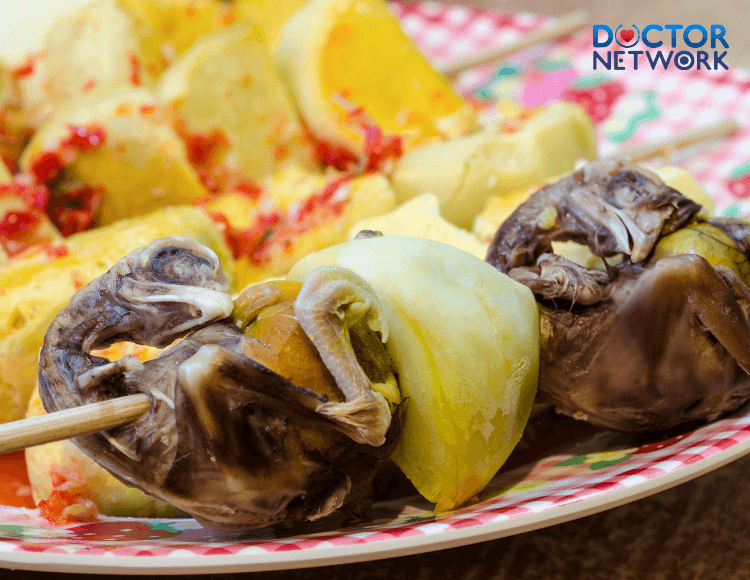
Dietary considerations
When integrating balut into one’s diet, it’s essential to consider its nutritional profile and caloric content. While it holds several advantages, awareness of dietary restrictions and individual health goals is paramount to ensure that it contributes positively to one’s eating habits.
Health Considerations
- Cholesterol Levels: Balut does contain a high level of cholesterol, averaging around 619 mg per egg. Individuals concerned about cholesterol intake should factor this into their consumption and incorporate balut in moderation.
- Protein Source: For those who are trying to increase their protein intake without excessive caloric consumption, balut can be a robust choice, particularly amidst a diet rich in physical activity.
- Fullness Factor: The fats and proteins in balut help create a feeling of satiety, aiding individuals trying to lose or maintain weight, as balut can replace less nutritious snacks.
Moderation and Personal Health
Utilizing moderation can enhance the benefits of balut within any diet. Emphasizing balance incorporating vegetables or healthy grains alongside balut can mitigate risks associated with high cholesterol while still deriving its nutritional properties.
Pairings for Enhanced Nutrition
- Vegetable Side: Consider pairing balut with a fresh salad to augment fiber content.
- Whole Grains: Adding a source of complex carbohydrates like brown rice can provide sustained energy.
Conclusion
Incorporating balut into your diet can serve as a flavorful and nourishing experience when done mindfully. With conscious choices surrounding its consumption, balut can hold a meaningful place within individual dietary frameworks, supporting health and cultural connectivity.
Balut in a caloric deficit diet
Balut can indeed find its way into a caloric deficit diet, appealing to those looking to manage their weight while still enjoying this unique delicacy. However, careful portion control and recipe considerations are required to incorporate balut into an effective weight-loss strategy.
Analyzing the Calorics
In a caloric deficit plan, the objective is to consume fewer calories than the body expends. With balut containing around 188 calories per egg, it’s a moderately calorie-dense option, so adjustments in daily intake are needed to compensate for the additional calories.
Balut Benefits in a Low-Calorie Framework
- High Protein: At 13-14 grams per egg, the protein helps contribute to feeling full. Including protein-rich foods can minimize cravings and lead to better dietary compliance.
- Nutrient Richness: Balut’s balance of vitamins and minerals provides a galore of nutrients while offering controlled caloric input, which can be particularly beneficial during caloric restriction.
- Energy Source: The moderate amount of fats can provide lasting energy, releasing feeling full well beyond mealtime.
Meal Planning Suggestions
- Use as a Snack: Consider having balut as an afternoon snack once or twice a week, which will help meet protein targets without significant caloric overload.
- Combine with Low-Cal Options: Having balut with a side of vegetables or salads can add bulk to meals without excessive calories, enhancing satiety and nutrition.
Conclusion
While delicious and nutrient-dense, care should be taken to manage overall caloric intake when incorporating balut into a caloric deficit diet. With proper adjustments, it can provide not only sustenance but also enjoyment while adhering to personal health goals.
Balut for muscle building
In the realm of muscle building, balut serves as a nutrient-dense food option owing to its balanced combination of protein, fats, and vitamins. As individuals focus on muscle repair and growth, integrating balut into their diets can provide essential nutrients.
Protein-Packed Benefits
The protein in balut is a critical asset for muscle building:
- High Protein Content: With approximately 13-14 grams per egg, it serves as a robust source of protein that can adequately contribute to dietary requirements for muscle recovery and growth.
- Essential Amino Acids: The proteins in balut are complete, providing all essential amino acids necessary for muscle synthesis. This makes balut a diverse dietary option beyond conventional protein sources like meat or whey protein.
Complementing a Muscle-Building Diet
To enhance muscle-building efforts, balut can play a role as a post-workout snack:
- Quick Energy: Its mix of protein and fats offers a good source of energy that supports recovery after weight training or intense workouts.
- Rich in Micronutrients: Balut provides essential vitamins and minerals that support various bodily functions necessary for optimal health during muscle-building initiatives.
Dietary Considerations for Muscle Builders
While integrating balut, individuals should also be conscious of its cholesterol content and pair it with other whole foods to create balanced meals:
- Combine with whole grains, such as quinoa or brown rice, to provide additional carbohydrates to replenish glycogen stores.
- Pair with greens for a practical side to fulfill dietary fiber needs.
Conclusion
In summary, balut is an excellent option for anyone looking to enhance protein intake within a muscle-building regimen. It provides not only the necessary protein but also essential nutrients to reinforce health and support overall fitness goals.
Allergen information
As with any food, understanding potential allergen information is essential, particularly with balut, which consists of duck eggs. Here are key considerations regarding allergens:
Potential Allergen Risks
- Egg Allergies: Individuals with a known allergy to eggs particularly those allergic to hens’ eggs may also experience adverse reactions when consuming balut due to cross-reactivity, as duck eggs can share similar protein structures.
- Symptoms to Monitor: Symptoms of egg allergies can range from mild skin reactions to severe gastrointestinal or respiratory issues, warranting caution if the individual has existing food allergies.
Recommendations
- Consulting Healthcare Providers: Individuals uncertain about their tolerance to duck eggs, particularly those with chicken egg allergies, should seek advice from healthcare professionals before trying balut.
- Testing with Caution: For those without a known egg allergy, testing with a small amount while monitoring any adverse reaction can help determine suitability.
Conclusion
Food safety is paramount, and while balut offers nutritional benefits, consumers should remain vigilant regarding allergen risks and consult with health professionals to ensure safe consumption.
Cooking and preparation
Cooking balut is straightforward and requires a few essential steps to ensure the eggs are prepared correctly and safely. This process highlights the balance of culinary tradition and simple methodical cooking.
- Choosing the Eggs: Start by sourcing fresh balut eggs from a reputable vendor. Ensure the eggs are intact, as cracks can compromise the cooking quality.
- Cleaning the Eggs: Rinse the eggs gently under running water to remove any dirt. Proper hygiene is essential to avoid contamination.
- Boiling Process: Fill a pot with enough water to cover the eggs and bring it to a rolling boil. Carefully place the eggs in the pot without overcrowding.
- Cooking Time: Boil the eggs for about 20-30 minutes this cooking time will ensure that the embryo is fully cooked.
- Cooling Down: Once done, immerse the cooked eggs in cold water to stop the cooking process. This step is crucial for preserving texture and taste.
- Serving: To enjoy balut, it’s common to crack the shell open from the wider end, sip the savory broth, and consume the rich contents alongside a dash of salt or a splash of vinegar.
Conclusion
The preparations of balut embody a longstanding tradition, showcasing both the beauty of culinary simplicity and the depth of cultural experience that lies in preparing and sharing this unique delicacy. Whether enjoyed as a snack or part of a larger meal, balut continues to hold a significant place in Filipino cuisine, showcasing both heritage and a flavorful response to culinary needs.
Best ways to cook balut
Cooking balut, after all, isn’t just about nutrition it’s about crafting an experience that elevates the eating process into something memorable. Here are some of the most popular methods to prepare balut while keeping flavor at the forefront:
Traditional Boiling
This is the most common method and is typically how balut is enjoyed:
- Boiling: As previously described, boiling for 20–30 minutes retains the legume’s natural flavors while ensuring robust cooking.
- Seasoning: A classic accompaniment includes salt or vinegar for enhancing flavor adding a bright contrast to the richness of the yolk and embryo.
Crispy Balut
For those looking to add a twist:
- Deep-Frying: After boiling, roll the balut in flour and coat in batter before deep-frying until golden brown. This adds a delightful crunch to the exterior while allowing the egg’s molten center to shine.
- Serve with Sauce: These crispy balut can be served alongside dipping sauces such as garlic vinegar or sweet chili sauce, offering a delicious juxtaposition of textures and tastes.
Balut Soup
This method integrates balut into a warming, hearty meal:
- Soup Base: Prepare a broth of your choice such as chicken or vegetable then add boiled balut and simmer it together with fresh vegetables (like bok choy or carrots).
- Seasoning: Enhance flavors with spices and herbs such as garlic, ginger, and scallions for a comforting soup that highlights the unique taste of balut among other wholesome ingredients.
Conclusion
Whether boiled, fried, or integrated into soups, the methods of cooking balut not only reveal its versatility in the kitchen but also its availability as a culinary centerpiece. Enriching each bite with flavor, preparation plays an essential role in preserving its nutritional benefits while highlighting cultural richness.
Traditional recipes featuring balut
To fully appreciate balut’s cultural significance and culinary versatility, it’s enriching to explore traditional recipes that feature this one-of-a-kind ingredient. Below are well-loved recipes incorporating balut, showcasing its rich flavors and distinct texture:
Basic Boiled Balut
- Ingredients: Balut eggs, salt, vinegar (optional).
- Preparation:
- Boil the balut for about 20-30 minutes until fully cooked.
- Let cool, then enjoy with salt or dipping sauce of vinegar.
Adobong Balut
- Ingredients: Boiled balut, vinegar, soy sauce, bay leaf, sugar, garlic.
- Preparation:
- Remove the broth from the balut while retaining the embryo.
- Combine vinegar, soy sauce, and bay leaves in a pan and simmer.
- Add the balut and sugar, simmer briefly to meld flavors, and serve warm.
Balut Silog
This Filipino breakfast option showcases balut prominently:
- Ingredients: Balut, garlic fried rice, sunny-side-up egg.
- Preparation:
- Prepare garlic fried rice and place on a plate.
- Top with a side of boiled balut, serving alongside a sunny-side-up egg for a filling breakfast.
Cultural Insight
These recipes highlight the ability of balut to fit seamlessly within various dishes, showcasing its versatility as well as how it serves as a social food that brings people together whether in families enjoying breakfast or friends gathering to relish in the unique flavors.
Conclusion
Traditional recipes extend the experience of enjoying balut, adding further layers of cultural appreciation while promoting community. These recipes are more than just nourishment; they tell stories, share connections, and reinforce the community around this delicacy.
Cultural significance
In Filipino culture, balut exceeds the definition of merely a food item; it embodies deep-rooted traditions, societal rhythm, and the essence of community bonding. This unique delicacy serves as both a culinary icon and a cultural motif that expresses resilience and resourcefulness.
Symbol of Heritage
- Culinary Tradition: Balut resonates with Filipino identity, showcasing agricultural practices and local resources. The act of consuming balut fosters a shared connection to agricultural landscapes and culinary tweaks.
- Rite of Passage: Enjoying balut is often considered a rite of passage, marking transformations in one’s culinary journey a symbol of becoming more connected to cultural heritage.
Social Bonding
- Gatherings: Balut is usually shared among friends and family, fostering conversations and cultural exchanges, portraying its role as a catalyst for social interaction.
- Festivals: During festivals and special occasions, balut may dominate the food stalls, showcasing its importance as part of celebratory meals, accessible to everyone.
Global Perspective
Globally, balut attracts mixed reactions. While it is cherished in the Philippines, it often evokes surprise and curiosity elsewhere, leading to discussions about ethics and food culture. However, for those who indulge, it opens doors to understanding the nuances of global cuisine while challenging perceptions.
Conclusion
Ultimately, balut is not just a dish; it is a celebration of Filipino culture, demonstrating what makes it unique while highlighting deep values, local traditions, and shared experiences. It offers a tangible connection to one’s past and an opportunity for cultural expression in today’s world.
Balut in Filipino cuisine
Balut stands as a cornerstone in Filipino cuisine, illustrating the profound relationship between food, culture, and identity. This popular delicacy is not merely a dish but a complete experience steeped in tradition and social practices that resonate deeply within the Filipino community.
Essential Food Item
- Culinary Staple: For many Filipinos, balut represents an accessible source of nutrition, available in bustling marketplaces and street corners, often sold by vendors during the evening.
- Gastronomic Exploration: It is not uncommon for preparations to range from simple boiled balut served with salt to more elaborate dishes, showcasing the versatile nature of how it can be enjoyed.
Cultural Rituals
- Festivals: During local festivals, balut is commonly featured, highlighting its cultural significance as a communal food. Events often see crowds gathering to partake in the robust tastes offered by local vendors.
- Rite of Passage: For children and adolescents, trying balut can represent a milestone, bridging generational gaps and teaching culinary traditions.
Culinary Techniques
Balut preparation remains straightforward yet emblematic of Filipino ingenuity. Most commonly consumed boiled, balut embodies the country’s adaptability and resourcefulness in utilizing available resources to create flavorful dishes.
Conclusion
Balut is embedded within the very fabric of Filipino cuisine and identity. Its role as a beloved food transcends mere sustenance, showcasing a vibrant connection to history, community, and tradition.
Global perception of balut
Balut, while treasured within Filipino culture, garners diverse reactions on the global stage. To many, it represents an adventurous culinary choice, while to others, ethical concerns regarding the consumption of fertilized eggs surface significant debate.
Mixed Reactions
- Curiosity and Shock: For those unfamiliar, balut often evokes surprise a unique blend of intrigue and repulsion that captures attention and may prompt adventurous eaters to seek the experience.
- Cultural Appreciation: As culinary tourism expands, more individuals are willing to step beyond their comfort zones to embrace authentic cultural foods, with balut acting as a point of interest demonstrating the diversity of global eating customs.
Ethical Discussions
- Animal Rights: Balut’s preparation raises ethical conversations regarding animal welfare. Questions often arise regarding the treatment of embryos and consumer choices.
- Cultural Context: Advocates argue for the understanding of cultural contexts when viewed within its local lenses, balut not only defines culinary innovation but also speaks to the community’s traditions of resourcefulness.
Bridging Perspectives
Balut plays an intriguing role in portraying the complexity of food perceptions across borders. It challenges individuals to reflect on their culinary identities while considering how diverse traditions enrich global food culture.
Conclusion
Ultimately, while perceptions of balut may vary greatly, its significance captures the broader experiences that exist within culinary exploration. Despite global debates, balut remains a crucial cultural symbol provocative yet unifying among those who appreciate its distinct flavors and traditions.
FAQs about balut calories
Inquiring about balut calories is common among those considering integrating this unique food into their diet. Here are some frequently asked questions regarding its caloric content and overall nutritional profile.
Common Questions and Answers
- What is the caloric content of balut?
- Balut typically contains about 188 calories per egg, varying slightly based on cooking methods.
- How does this calorie count compare to other eggs?
- Balut contains more calories than a standard chicken egg (around 72-80 calories) and is similar to duck eggs, which also range in the same caloric space.
- Is balut a nutritious food choice?
- Yes! Beyond its calorie content, balut is rich in protein (about 13-14 grams), packing a significant amount of nutrients, including vitamins and minerals.
- Can I include balut in a weight-loss diet?
- Balut can be a part of a weight-loss diet as it offers high protein content and essential nutrients, but it should be consumed in moderation due to its cholesterol levels.
- How should balut be consumed for the maximum benefit?
- It is best enjoyed boiled, served with salt or vinegar, and paired with vegetables or rice to create a balanced meal, maximizing nutritional diversity.
Conclusion
These FAQs help demystify the relationship between balut’s caloric content and its nutritional attributes, providing insight for individuals looking to incorporate balut into their diets while understanding its essence and benefits.
Common misconceptions
Despite its popularity, there are several common misconceptions surrounding balut. Understanding these myths can promote better appreciation for this unique delicacy.
Addressing Misconceptions
- Misconception: Balut is just a boiled egg.
- While balut shares similarities with boiled eggs, it features a developing embryo, imparting unique flavors and textures that set it apart.
- Misconception: Balut is unhealthy.
- Balut is rich in essential nutrients; however, its high cholesterol content means moderation is advised, similar to other nutrient-dense foods.
- Misconception: All balut is the same.
- There are different stages of balut based on incubation. Variants, such as “balut sa puti,” may have varying textures and appeal to different taste preferences.
- Misconception: Balut is primarily consumed for shock value.
- While it may appear exotic to newcomers, many cherish balut for its taste and nutritional benefits, appreciating its cultural significance.
Conclusion
By dismantling common misconceptions surrounding balut, individuals can gain a more nuanced understanding of this unique food. Embracing the complexities behind balut opens doors to richer cultural insights and culinary experiences.
Portion sizes and serving suggestions
When consuming balut, effective portion sizes and serving suggestions can enhance the overall experience while ensuring nutritional benefits are prioritized.
Recommended Portion Sizes
A typical serving of balut is one egg, which weighs approximately 70 grams. This serving offers about 188 calories, making it a satisfying snack or component of a larger meal without overwhelming caloric intake.
Serving Suggestions
To fully enjoy and complement the delicate flavors of balut, consider the following serving suggestions:
- Simple Seasoning: Serving balut with a sprinkle of salt can elevate flavors effortlessly.
- Accompaniment Pairings: Enjoy alongside vinegar, soy sauce, or hot sauce to add a kick of flavor that balances the richness.
- Create a Meal: Pair with whole grains, steamed vegetables, or a fresh side salad to create a balanced meal that respects the nutrient density of balut while enhancing overall palatability.
- Cultural Experience: Share balut during gatherings or family meals as a conversation starter, engaging everyone in discussions about heritage and culinary traditions.
Conclusion
Portion sizes and serving suggestions are essential components of making the most out of your balut experience. Celebrating and savoring this delicacy while considering its overall nutritional benefits sets the stage for enjoyable and meaningful culinary moments.
Scientific References on “How Many Calories Are in Balut”
Below are some scientific references on “How Many Calories Are in Balut”:
Scientific Evidence on the Caloric Content of Balut:
- National Institute of Nutrition of Vietnam: According to the Vietnam Nutritional Composition Table by the National Institute of Nutrition, on average, 100g of balut provides 182 calories.
- Ministry of Health of Vietnam: Data from the Ministry of Health of Vietnam also shows similarly, 100g of balut contains about 182 calories.
- USDA FoodData Central: The USDA FoodData Central nutritional database of the United States Department of Agriculture also provides similar information. One balut egg (about 50g) contains approximately 91 calories.
- A 2017 study by the University of Medicine and Pharmacy at Ho Chi Minh City found that one balut egg (about 65g) contains 116.5 calories.
- A 2018 study by Can Tho University also presented similar results, 100g of balut contains 185.2 calories.
Balut is not only a delicious food source but also an important part of a healthy and nutritional diet. Understanding how many calories are in balut and the nutritional value of balut helps consumers leverage all the health benefits this food offers for overall health.
References:
https://en.wikipedia.org/wiki/Balut_%28food%29
https://www.carbmanager.com/food-detail/md:d214797a1bbb9fdd814885ad6d6da0c4/balut-egg
Kiểm Duyệt Nội Dung
More than 10 years of marketing communications experience in the medical and health field.
Successfully deployed marketing communication activities, content development and social networking channels for hospital partners, clinics, doctors and medical professionals across the country.
More than 6 years of experience in organizing and producing leading prestigious medical programs in Vietnam, in collaboration with Ho Chi Minh City Television (HTV). Typical programs include Nhật Ký Blouse Trắng, Bác Sĩ Nói Gì, Alo Bác Sĩ Nghe, Nhật Ký Hạnh Phúc, Vui Khỏe Cùng Con, Bác Sỹ Mẹ, v.v.
Comprehensive cooperation with hundreds of hospitals and clinics, thousands of doctors and medical experts to join hands in building a medical content and service platform on the Doctor Network application.











